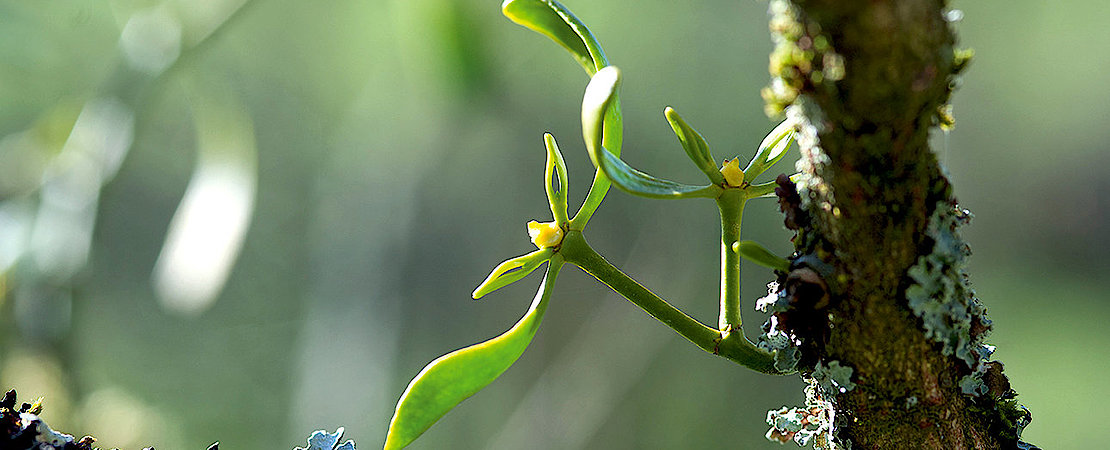Constituents in mistletoe extracts
The total extract from stems, leaves, buds, flowers, berries and sinker of the mistletoe plant contains numerous constituents:
- Over 600 different proteins; the exact protein spectrum depends on the host tree on which the mistletoe grew
- The best documented proteins typical of mistletoe are the sugar-containing mistletoe lectins; there are different types of lectins, which are contained in the total extract in different combinations
- Various viscotoxins, which, in addition to lectins, belong to the important pharmaceutically active components of mistletoe
- More than 7 different resin compounds (pentacyclic triterpenes) with tumor-inhibiting effects, which, however, are only present in very low concentrations in the aqueous injection preparations on the market because of their fat-solubility
- More than 1000 different enzymes
- Highly concentrated DNA (deoxyribonucleic acid, the chemical building blocks of genetic material)
- High content of thiols (e.g. glutathione) as sulphur-rich compounds of the mistletoe in a concentration which is up to a thousand times higher than in other plants
- Different fats (lipids), including triglycerides and waxes as well as membrane lipids
- Various flavonoids (yellow, red and blue plant pigments)
- Potassium and phosphate.
The proportion of constituents varies throughout the course of the year and with the host trees on which the mistletoe has grown. Some substances accumulate more in stems, others in leaves or berries, some more in female plants more in males or vice versa. Summer and winter extracts are therefore mixed separately according to the host tree in order to obtain a well-balanced mistletoe preparation.
For processing mistletoe plants into medicinal products, it is therefore important which parts of the mistletoe are harvested, at which time of year, from which tree and whether predominantly female or male plants are used.
